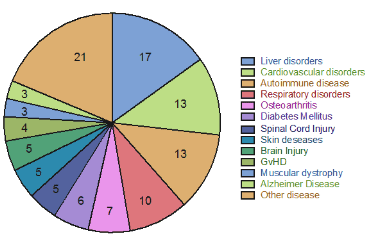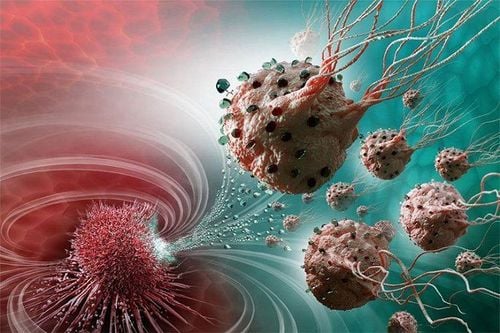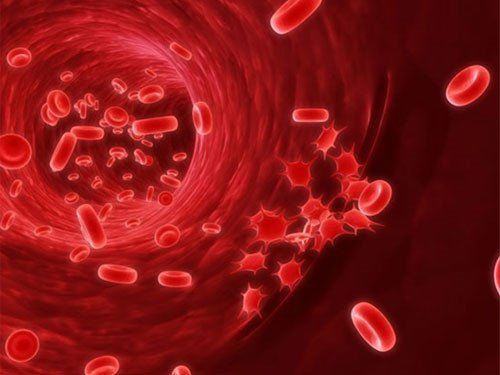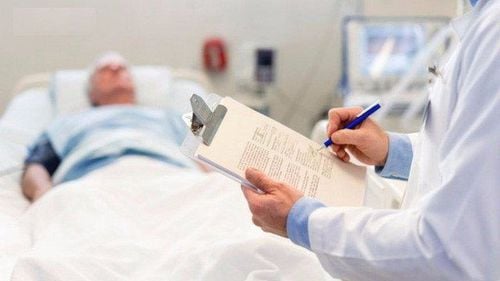This is an automatically translated article.
1.What is stem cell cancer treatment? Scientific name: Stem cell cancer treatment Common name: Marrow transplant Technical description: Chemotherapy or radiation therapy usually kills the stem cells in the bone marrow that help produce blood. Therefore, the stem cell transplant in cancer treatment helps the patient's body to regenerate blood cells.
Trắc nghiệm: Thử hiểu biết của bạn về bệnh ung thư
Ung thư là nguyên nhân gây tử vong hàng thứ 2 trên thế giới. Thử sức cùng bài trắc nghiệm sau đây sẽ giúp bạn có thêm kiến thức về yếu tố nguy cơ cũng như cách phòng ngừa bệnh ung thư.
Bài dịch từ: webmd.com
2. Indications and contraindications Indications:
Major blood cancers (75%) Acute myeloid leukemia Agranulocytic leukemia Acute lymphoma malignant lymphoma non-Hodgkin's myelodysplastic syndrome (MDS) Hemophagocytic syndrome (HLH) Lymphocytic leukemia... Other blood diseases: Hematopoietic disorders: Bone marrow failure, immune deficiency syndrome epidemics (Chediak-Higashi disease, severe combined immunodeficiency syndrome), autoimmune diseases... Congenital disorders of red blood cells: Thalassemia... Metabolic defects in neonates : Sugar metabolism disorder (mucopolysaccharidose)... People with autoimmune diseases. Are taking anti-rejection medication. T- or NK-cell leukemia. Having an infection or serious medical condition

3.Advantages and disadvantages of the technique Advantages:
Helps replenish healthy stem cells, increasing the number of important cells that are lost due to aging or disease. Not only is the most advanced anti-aging therapy in the world today, stem cell therapy also works to strengthen the immune system. Cons:
Getting ready for a stem cell transplant is difficult, with lots of tests, trying to find a match, and persistent chemotherapy and radiation before the transplant. Stem cell transplantation can save lives. However, patients face challenges for years to come. Problems are often related to the pre-transplant procedure or the drugs used during the transplant. These include organ damage, hormone changes, infertility, neurological effects, and other cancers. Expensive 4. Procedure Step 1: The patient will be examined and tested a few days before the transplant. During your hospital stay, your doctor will place a tube into a large vein in your chest. This tube is called a central venous catheter. It allows doctors to easily administer fluids or draw blood for testing. Step 2: To help the patient's body prepare for the transplant, the doctor will give the patient high doses of chemotherapy and possibly radiation. This treatment will help destroy damaged stem cells in the bone marrow. It also suppresses the body's immune system to not attack the new stem cells after the transplant. Some people may have more than one cycle of chemotherapy before having a transplant. Step 3: The stem cell transplant procedure is like a blood transfusion. During surgery, the doctor inserts stem cells into the patient's bloodstream through a central vein. Once the stem cells enter the body, it travels to the bone marrow and begins to make new red blood cells, white blood cells, and platelets. The transplant process will take more than an hour, including time for surgery preparation, implantation, and post-operative check-ups.

5.Normal manifestations after the procedure Painful sores in the mouth Nausea, diarrhea, and abdominal pain Rash Hair loss Liver damage, occurring in about 10% of transplant patients Tissue pneumonia interstitial. This type of pneumonia affects certain tissues in the lungs, affecting about 5% of patients preparing for a transplant. 6. When are the following manifestations of the technique abnormal and need immediate re-examination? Infections Vomiting Continuous 7. What kind of machines/equipment are needed to perform this technique Flow Cytometor Navios machine system for quality assessment of stem cells Monitor for patient monitoring 7 parameters (with ETCO2, IBP) , B40i 8.Things to keep in mind when performing this technique After being discharged from the hospital, the patient may have to be re-examined daily or weekly. During this rehabilitation phase, the patient may require frequent blood transfusions and antibiotics. It is important to have regular check-ups for about a year, until the immune system is working properly.
Please dial HOTLINE for more information or register for an appointment HERE. Download MyVinmec app to make appointments faster and to manage your bookings easily.













